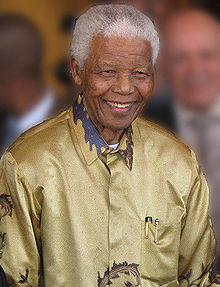Tim Shorrocks New Book: Spies for Hire
Steven Aftergood: “Spies for Hire is an excellent roadmap to the daunting new terrain of U.S. intelligence, in which the explosive growth of intelligence contracting threatens to overwhelm any possibility of independent oversight. In this groundbreaking work, Tim Shorrock explores who has benefited, who has paid, and why it matters to us all.”
In a compulsively readable tour de force of investigative reporting, SPIES FOR HIRE explains how Abu Ghraib and Blackwater are merely the tip of the iceberg. Shorrock’s meticulous research reveals the following and much more:
President Eisenhower famously warned Americans about the rise of a “military-industrial complex”, but in the information-saturated 21st century, the Intelligence-Industrial Complex exposed by Tim Shorrock in SPIES FOR HIRE is a more salient threat to our freedoms. From huge defense contractors to small, focused companies that provide specialized technology for mining and analyzing data, the disturbingly unregulated role of the private sector in gathering intelligence and acting upon it demands the level of scrutiny Tim Shorrock brings. In the bestselling tradition of Ron Suskind’s The One Percent Doctrine, SPIES FOR HIRE is a must-read for all Americans concerned with who pulls the strings (and triggers) of American foreign policy and national security.
“Spies for Hire is an excellent roadmap to the daunting new terrain of U.S. intelligence, in which the explosive growth of intelligence contracting threatens to overwhelm any possibility of independent oversight. In this groundbreaking work, Tim Shorrock explores who has benefited, who has paid, and why it matters to us all.”
– Steven Aftergood, director of the Project on Government Secrecy, Federation of American Scientists
“Tim Shorrock’s well researched and convincing book reveals how the intelligence community now subcontracts out most of its work—70 percent—to private-sector companies that inevitably have their own agendas, which may or may not accord with the national interest. By laying out very specifically how all this works, Shorrock has provided a very important service to the country.”
– Burton Hersh, author of The Old Boys: The American Elite and the Origins of the CIA
Tim Shorrock is an investigative journalist who has devoted a quarter-century of research to the intersection of national security and business, specifically researching intelligence contracting for the past four years. His work has appeared in many publications in the United States and abroad, including The Nation, Salon, Mother Jones, Harper’s, Inter Press Service, The Los Angeles Times, The San Francisco Chronicle, The Progressive, The Journal of Commerce, Foreign Policy in Focus and Asia Times. He also appears frequently on the radio as a commentator on US-Korean relations and US intelligence and foreign policy, and has been interviewed on Pacifica’s “Democracy Now,” Air America and CBS Radio. Shorrock grew up in Japan and South Korea and now lives in Tahoma, California, in the Sierra Nevada Mountains near Lake Tahoe.
sfux - 22. Okt, 22:27 Article 2647x read
















































